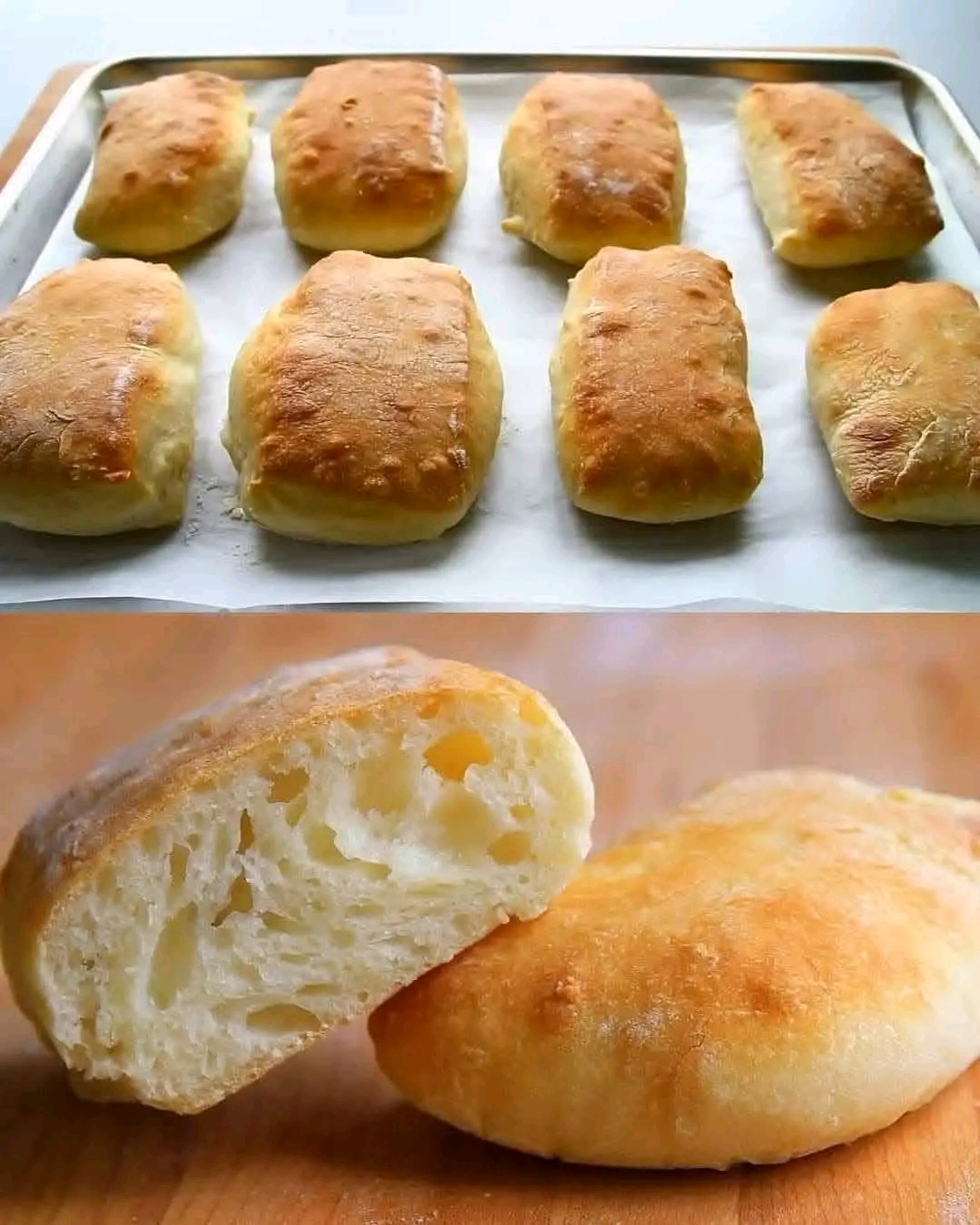Sure! Here’s a comprehensive ciabatta bread recipe with everything you asked for, including history, detailed instructions, and even a section for bread lovers.
Homemade Ciabatta Bread Recipe
Introduction
Ciabatta is one of the most beloved Italian breads, known for its crispy crust and airy, hole-filled interior. Originating in the 1980s, this rustic bread was created as Italy’s answer to the popular French baguette. Its name, ciabatta, means “slipper” in Italian, referring to its flat and elongated shape.
What makes ciabatta special is its high hydration dough, which results in a light, chewy texture. This recipe will guide you step by step to achieve bakery-quality ciabatta at home with just a few simple ingredients.
Ingredients
For the Dough:
- 500 g (3 + 1/3 cups) bread flour (high-protein flour for strong gluten development)
- 5 g (1 tsp) salt (for flavor and gluten strengthening)
- 5 g (2 tsp) active dry yeast (or 3 g instant yeast)
- 375-400 ml warm water (start with 375 ml and add more if needed)
For Dusting and Shaping:
- Extra flour for dusting
- Olive oil (optional, for a richer flavor)
Instructions & Methods
Step 1: Activating the Yeast
- In a small bowl, dissolve the yeast in 100 ml of warm water (not too hot, about 38°C/100°F). Let it sit for 5-10 minutes until it becomes frothy. This step ensures that your yeast is active.
Step 2: Mixing the Dough
- In a large mixing bowl, combine the bread flour and salt.
- Make a well in the center and pour in the yeast mixture and remaining water (start with 275 ml and add more if needed).
- Mix everything together using a wooden spoon or your hands until a sticky dough forms.
Step 3: First Rise (Bulk Fermentation)
- Cover the bowl with plastic wrap or a damp towel and let the dough rest at room temperature for 12-18 hours (overnight is best). This slow fermentation develops flavor and structure.
Step 4: Folding and Shaping
- Dust a work surface heavily with flour. Gently turn out the dough, being careful not to deflate it too much.
- Lightly stretch and fold the dough over itself 4 times, then let it rest for 30 minutes. This strengthens the gluten.
- Divide the dough into two or three equal pieces and shape them into long, flat loaves, similar to a slipper.
Step 5: Second Rise
- Place the shaped loaves on a floured baking sheet and let them rise for 1 hour. This will allow the dough to become airy again.
Step 6: Baking the Ciabatta
- Preheat the oven to 230°C (450°F). Place a tray of water in the bottom of the oven to create steam (this helps form a crispy crust).
- Bake the loaves for 20-25 minutes, or until golden brown and crisp.
- Let the bread cool completely before slicing to prevent it from becoming gummy inside.
History of Ciabatta Bread
Ciabatta bread is relatively new in the world of bread baking. It was invented in 1982 by Arnaldo Cavallari, a baker from Veneto, Italy. He developed ciabatta to compete with the French baguette, which was becoming increasingly popular in Italy. Cavallari’s version used high-hydration dough, resulting in a light, airy interior with an incredibly crisp crust.
Since its creation, ciabatta has become a staple in Italian cuisine and is now enjoyed worldwide. It’s commonly used for sandwiches, bruschetta, and dipping into olive oil and balsamic vinegar.
Lovers of Ciabatta Bread
Ciabatta has gained a cult following among home bakers and professional chefs alike. Lovers of ciabatta appreciate:
- The crispy yet chewy texture
- The versatility—perfect for sandwiches, paninis, and even garlic bread
- The long fermentation, which develops deep, complex flavors
- The satisfaction of making bakery-quality bread at home
If you’re a bread lover, ciabatta is a must-try recipe. Its rustic, open crumb makes it perfect for soaking up soups, sauces, and olive oil.
Conclusion
Making ciabatta at home is easier than you think! With just a few ingredients and some patience, you can create an authentic Italian bread that’s crispy on the outside and soft on the inside. Whether you’re using it for sandwiches or just enjoying it with olive oil, this ciabatta will be a game-changer in your kitchen.
So, are you ready to bake your own ciabatta? Try this recipe and enjoy the magic of homemade bread!
